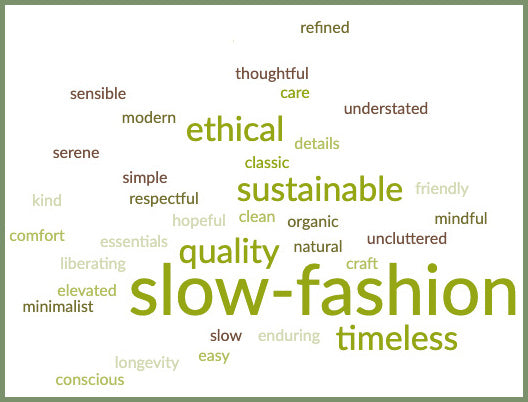Understanding Slow Fashion: A Movement Towards Sustainability
As the world becomes increasingly aware of the environmental impacts of the fashion industry, the concept of slow fashion has emerged as a pivotal response. Unlike the fast fashion model, which emphasizes rapid production and consumption often at the expense of quality and sustainability, slow fashion advocates for a more deliberate and ethical approach to clothing.

An overview comparing slow fashion and fast fashion.
Source: Italian Artisan
At its core, slow fashion promotes thoughtful consumerism, encouraging individuals to invest in quality garments that are made to last. This philosophy helps to mitigate waste and reduce the carbon footprint associated with fashion production and disposal.
What is Slow Fashion?
Slow fashion can be defined as an approach that respects the values of artisanal craftsmanship and sustainable materials. This movement emphasizes transparency throughout the supply chain, encouraging brands to source materials ethically and ensure fair labor practices. The slow fashion movement also aims to reduce overconsumption, as consumers are inspired to purchase only what they truly need.

Showcasing ethical clothing as part of slow fashion.
Source: Fair Indigo
Principles of Slow Fashion
The principles of slow fashion include:
- Quality over Quantity: Slow fashion brands focus on quality garments that epitomize durability and sustainability, as opposed to producing high volumes of low-quality items.
- Transparency: Consumers are encouraged to understand where their clothing comes from, empowering them to make informed decisions about their purchases.
- Timeless Design: Slow fashion promotes classic designs that remain stylish over time, as opposed to fleeting trends that contribute to waste.
- Mending and Repairing: Instead of discarding items, slow fashion advocates encourage repairing and maintaining garments, extending their life cycle.
Why Choose Slow Fashion?
Adopting a slow fashion mindset comes with numerous benefits:

A visual representation of the ultimate guide to slow fashion.
Source: Orbasics
- Environmental Impact: By choosing sustainable materials and ethically produced items, slow fashion significantly reduces the environmental damage caused by the industry.
- Supporting Local Communities: Slow fashion often involves local artisans and craftspeople, thereby supporting local economies and preserving cultural heritage.
- Empowerment: Consumers become change-makers, participating in a movement that prioritizes ethical practices over profit margins.
How to Participate in the Slow Fashion Movement
Participating in slow fashion doesn’t require a complete lifestyle overhaul. Simple changes can make a significant impact:
- Invest in Quality: Opt for high-quality pieces that you will wear for years rather than fast fashion fillers.
- Educate Yourself: Research brands to understand their production processes and their commitment to sustainability.
- Buy Second-Hand: Thrifting and purchasing from vintage stores extends the life cycle of garments and reduces waste.
- Learn to Repair: Consider taking a sewing class or learning simple mending techniques to extend the life of your clothing.
Conclusion
The slow fashion movement presents a powerful alternative to the destructive fast fashion cycle. By prioritizing sustainability, ethical production, and conscious consumerism, slow fashion not only addresses the urgent environmental issues we face but also creates a more equitable industry capable of enriching lives and communities. As consumers, we have the power to effect change with our purchasing choices. Choosing slow fashion is not just a personal commitment; it’s a collective call to action for a healthier planet.